Throughout Europe, the idea of arriving in Turkey had been dreamily optimistic. Amid the snow, wind and rain of the Low Countries, the Alps and the Balkans, one could not help but assume that Turkey would bring warmer climes and easier times. However, by the time we left Istanbul, even after a lazy ten-days off the bike peppered with touristic outings, it was still only early March. When we finally found a map of the country (in the excellent specialised cycle touring shop, Bisiklet Gezgini, in Istanbul’s Fenerbahce district), we discovered that most of its interior was effectively on a plateau, at about 1000m alt. on average – and so quickly realised that the morale-boosting visions of sun soaked days in the saddle were probably a while off yet.
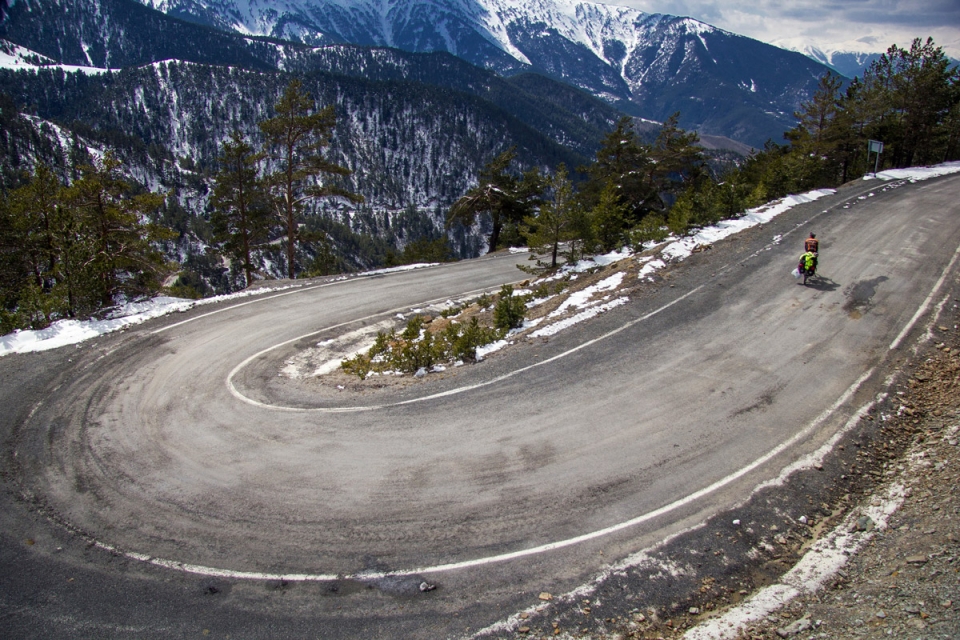
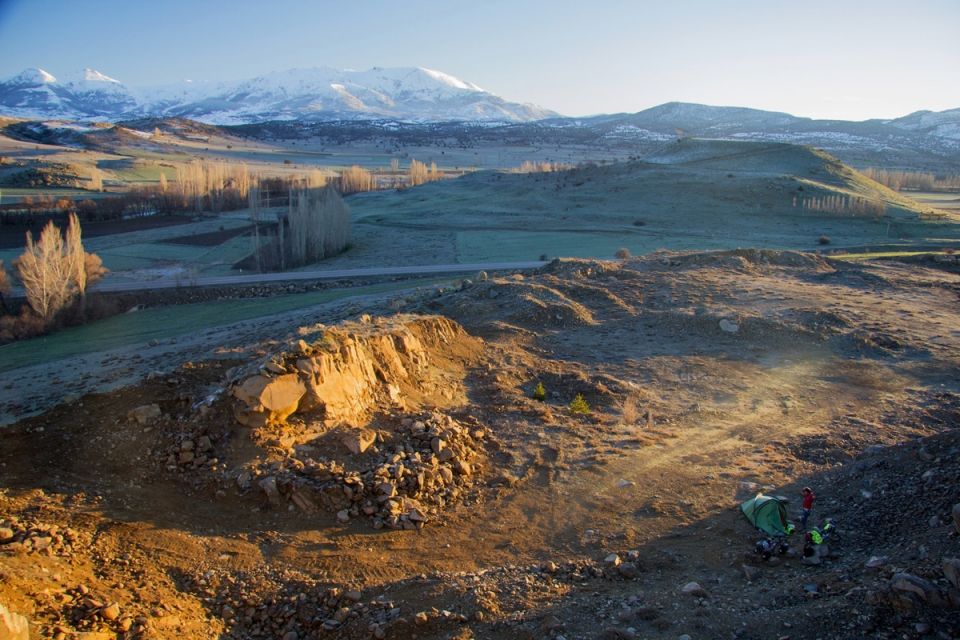
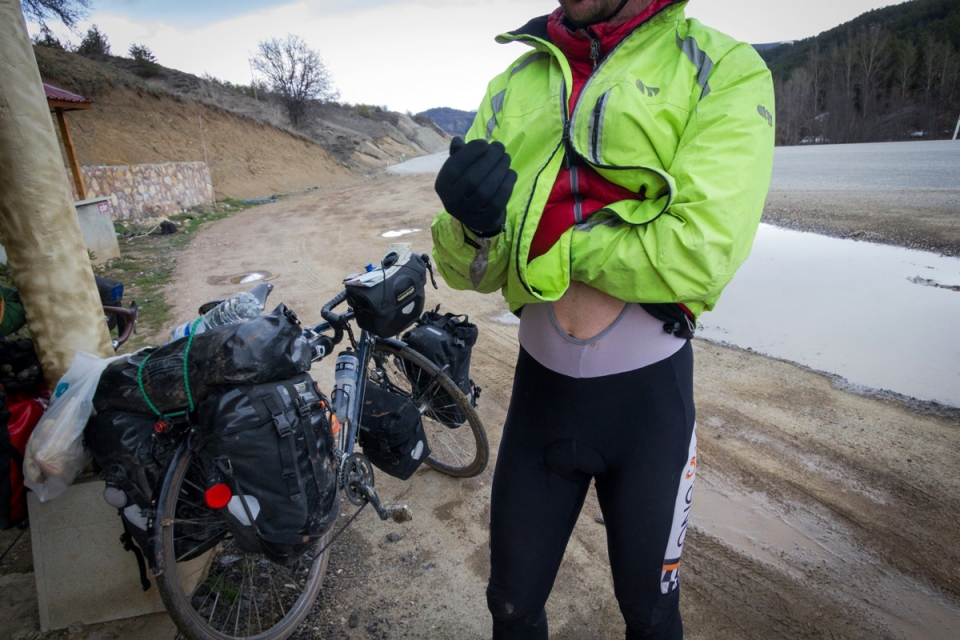
Two days later, having climbed up onto the plateau and some bleak stretch of road between the eastern towns of Bozoyuk and Eskisehir, we found ourselves riding in the snow once again. Our aim was to navigate southeast towards Anatolia and the ancient ruins of Cappadocia, but the worsening weather and reports of a positively balmy 17 degrees on the Black Sea – a popular route across Turkey for cyclists – saw us cooped up in an anonymous cafe wolfing down baklava and sipping on tea, debating the advisability of such an idea.
The map, laid over the table at the mercy of a dozen local fingers jabbing at it, was heavily consulted alongside the weather predictions and the waitress’s opinion on baklava choices, until it was eventually decided to carry on with Plan A. Cappadocia was somewhere we both wanted to visit, and the mental defeat of running away from our struggles was something we wanted to avoid, so we continued on into the depths of inland Turkey.
Our passage of travel became less European and more Asiatic at the passing of every town, from the steppe-like expanses of pastoral land, coloured brown and green, to the steadily increasing levels of Islamic culture and the disappearance of western corporations.
In fact, the feeling of foreignness and remoteness experienced in Turkey was somewhat of a surprise, being a far cry from the sun holidays that most people I know go in search of. As such a big landmass perhaps it shouldn’t have been such a surprise, but to understand the basic existence of the villages through which we passed, in person, and to sense their unfamiliarity to tourists really was.
Out of season and out of main infrastructural routes, fruit and vegetables became very hard to come by and so a diet of bread and chocolate spread, pasta, rice and stock cubes was the sorry result. A crucial nutritional supplement to these feasts was tea though – or çay – as it is called pretty much everywhere between Western Europe and China. The Turks drink it from their dainty hourglass cannikins with addiction.
Stumbling into the smoky, male-only tea houses, holding up two fingers and pleading for Iki chai, Rob and I were often an intriguing addition to the mid-afternoon routines for the other regulars, but all would greet us warmly as they bade farewell and made humour of the bad weather, filing out to the mosque upon the call to prayer’s afternoon beckoning. The proprietor would politely hasten our final slurps, before locking up and following suit.
"A crucial nutritional supplement to these feasts was tea - or çay - as it is called pretty much everywhere between Western Europe and China. The Turks drink it from their dainty hourglass cannikins with addiction..."
_____________________________________________________________________________
For most east-west or west-east cycle tourists in Eurasia, Iran has traditionally been the route of choice. But as British citizens we fall onto their black list, along with our American and Canadian friends, which is why the Caucasus, and the Caspian Sea, were obligatory additions to our itinerary, and so it was here that we were now headed. Crossing into Georgia, and back into the realms of Christian Orthodoxy, was a very definite and noticeable change, such is the country’s uniqueness. The language, the architecture, the food, the facial complexions of the Georgians themselves, and the geographical diversity of the place are all exquisitely hard to relate to anywhere else without beginning to ramble on in a series of inaccurate similes.
Our twenty-day route through was ultimately defined by my first major mountainous encounters since the Alps, in the form of the greater and lesser Caucasus. But despite what the names might suggest, our most pressing experience came while traversing the former, on the 2025m Goderdzi Pass. Rising up from sea level on the Black Sea coast, the summit eventually came after two full days of climbing on what were easily the most abominable roads experienced to date; a crude mixture of sand, rocks, crumbled asphalt and snow drifts. But if the climb was testing then the descent was simply unpleasant – the blizzards and resulting massacre of brake pads forcing us to remember skills perfected as ten-year-olds and use our shoe soles as brakes as we careered half-blind down the mountain.
The village of Adigeni eventually materialised under a darkened sky at around 8pm, and despite asking there was nobody willing to let us camp in their barn, so we sought refuge in the cellar of an abandoned building. But not until after raising the tent did we notice that the entirety of the floor
was formed of a compacted layer of gifts, both cow and human, of the faecal variety. But too late was it in the day, and too weary were our spirits, to bother moving.
A flirtatious side-trip up into the greater Caucasus followed, as we left our bikes in Georgia’s charming capital, Tbilisi, and took a bus to the dilapidated town of Stepantsminda, just 12km from the Russian border and in the shadow of the 5047m Mount Kazbegi (by some definitions Europe’s highest peak), for a hike up to the celestially perched Gergeti Trinity Church. Being back in the high mountains was a welcome treat, but not having ridden our bikes up there left a noticeable absence in our experience.
Before long the Azeri border had passed under our wheels too, and for the first time since the Croatian coastline, a good two months prior, we were blessed with warmth and sunshine. A generous tailwind, well-surfaced roads, and the necessity to get to Baku – Azerbaijan’s capital – to begin the Central Asian visa process only added to our exuberance – we crossed the 400km span of the country in three days.
Of all the difficulties that beset a trip such as this (be them topographical, meteorological, monetary, or else) by far the most troublesome is the bureaucracy of it all, for reasons of frequency, cost, stress, and feeling of pointlessness. However, it is a necessary part for all travellers in this part of the world, and after ten days we had jumped through the hoops and humoured the grumpy consuls enough to receive both our Uzbek and Tajik visas.
This left just one more hurdle before this leg of the journey was finished: the infamous Caspian Sea crossing to Kazakhstan…
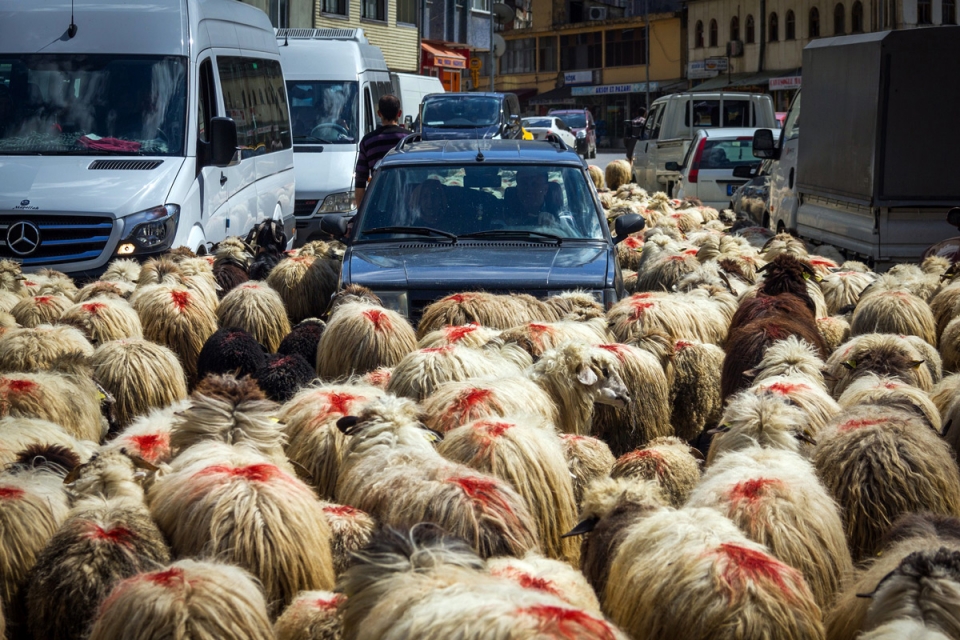
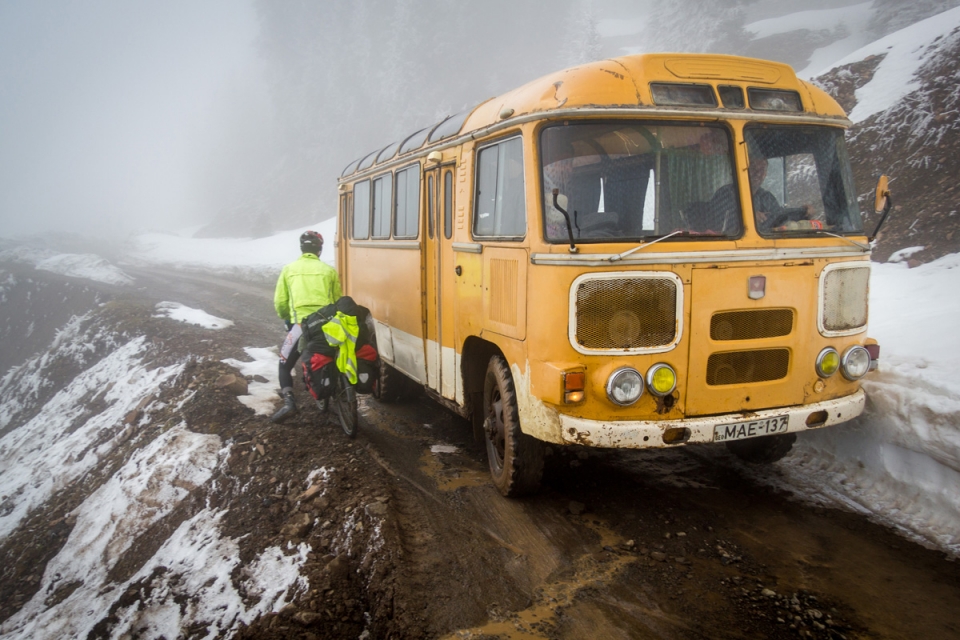
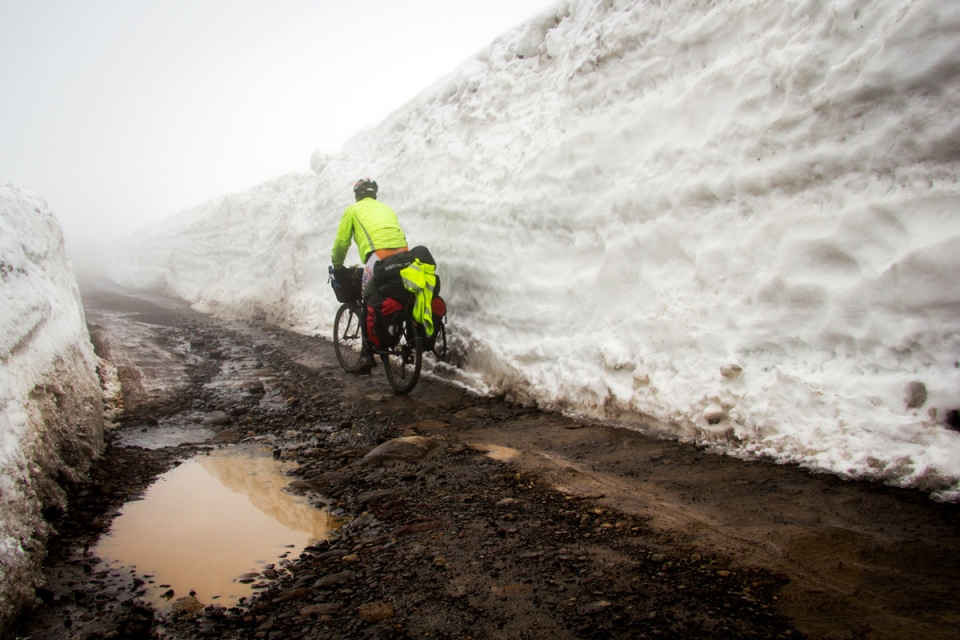
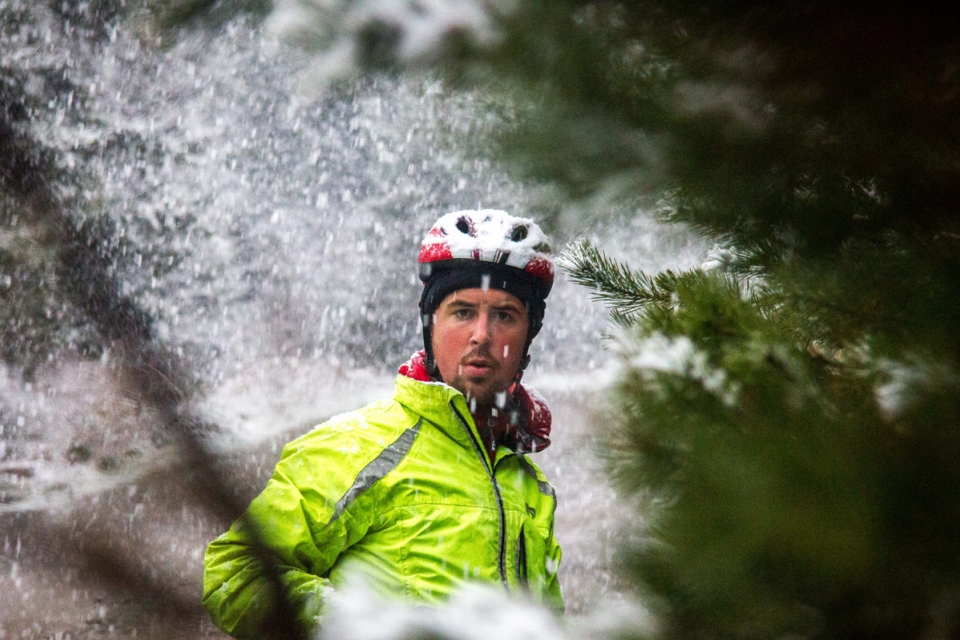
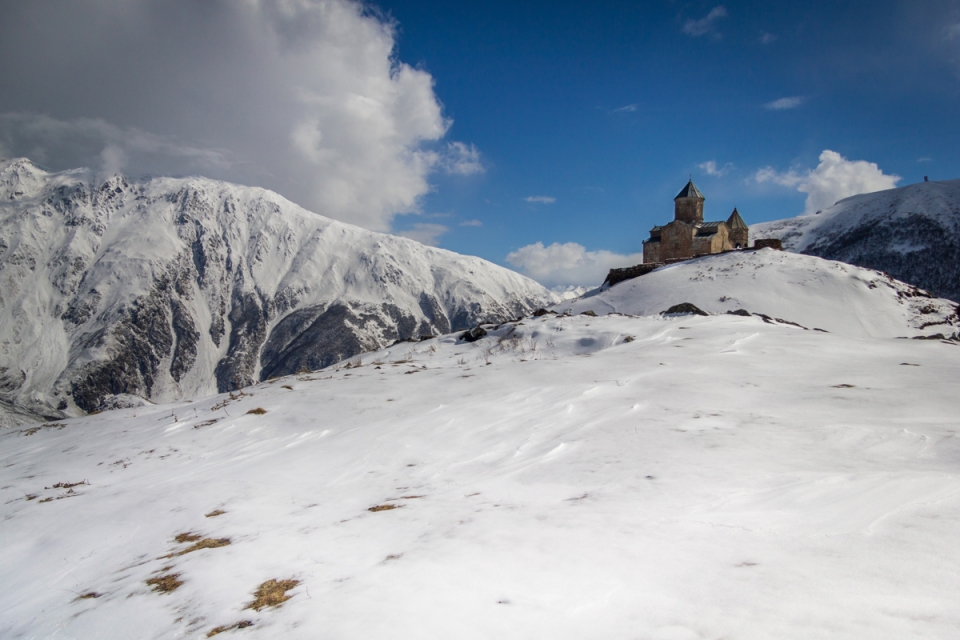
Nobody knows when or where one of the handful of freight ships that make the Baku-Aktau crossing will leave until the day of sail, so every morning one must call one of the many mysterious numbers that are said to be the ticket office and ask – in broken Russian – if there is a departure that day. We were told with a very blunt “niet” and subsequent hang up that there was no ferry on a few occasions, but then, not one hour after asking and another resounding “niet”, we received word from some fellow cyclists who had obviously been told otherwise. ‘You have half an hour to get a ticket’, read the text message, and led to a manic next few hours as I left Rob to pack and began time trialling to the ticket office, which was 15km out of the city. A fairly lackadaisical woman, whose voice was that of the brief phone operator, allowed me to buy two tickets and informed me that the boat would be leaving at 6pm from a dock 80km in the other direction: “You must be there in 2 hours”, she said with not the least bit of sympathy.
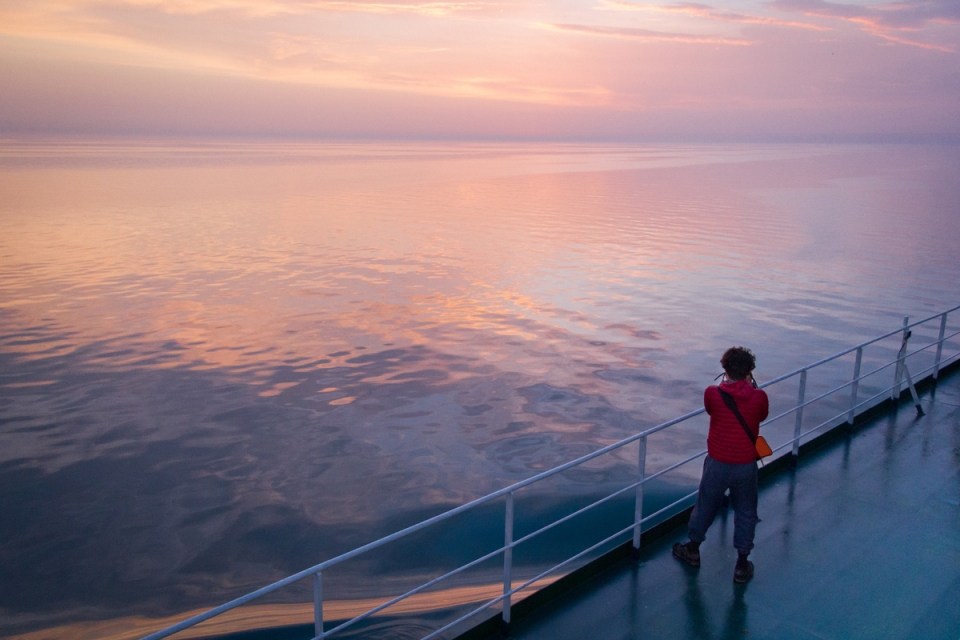
It was another 14 hours, after various cycles, car journeys and episodes of waiting around, that the ship’s engines fired into action and eventually pushed us away from the quayside at 2am the following morning, as we slept in our onboard cabin. The crew numbered seven or eight, and Rob, Kirsty, Marcus and I were the only passengers but for a Georgian duo who were driving the ship’s cargo: a freight train carrying frozen chicken legs that had been rolled onto the ship late the previous night. After climbing the mast to watch the sun rise, covertly exploring the engine rooms, doing our best Titanic manoeuvres and seeing to a bit of bike maintenance, there was not a lot else by way of entertainment aboard the Shahdag for the rest of our 45 hour crossing. However, the aforementioned Georgian train drivers soon took care of that:
After beckoning us on to their living carriage and hosting a very civilised mid-morning snack of pickles, cheeses and bread, it did not take long for other famous Georgian specialities, homemade wine and ChaCha (a homemade spirit) to be plonked onto the table – before midday, this was.
There were large shot glasses involved, that’s for sure. And faint memories of our hosts producing a third bottle, announcing “Let’s move on to the light stuff – this one’s only 60%”, before a feeling of self-induced seasickness and confusion over where the last 24 hours had gone the following morning. Luckily though the rising sun also bought with it the perfect remedy for our hangovers: the first sighting of land; of Kazakhstan, and of Central Asia.